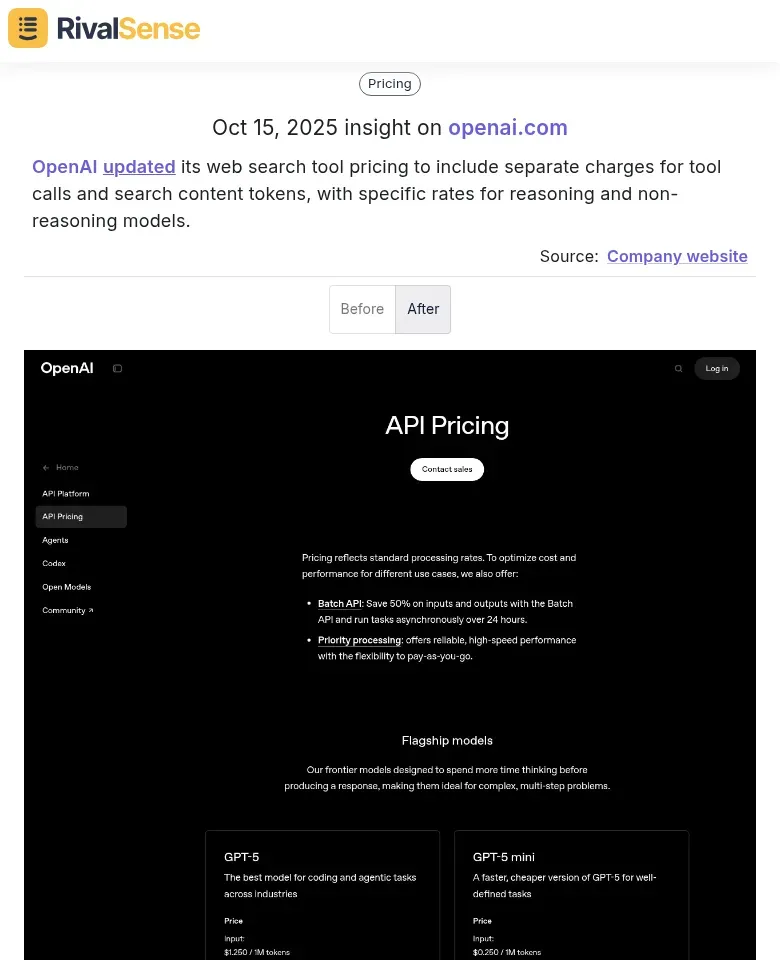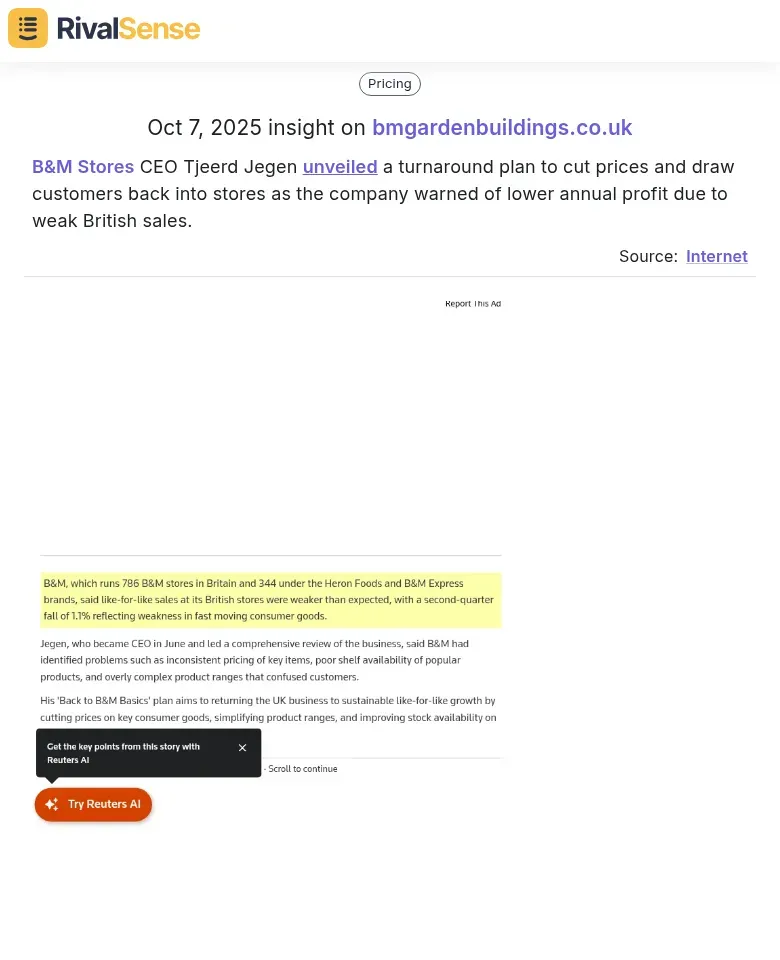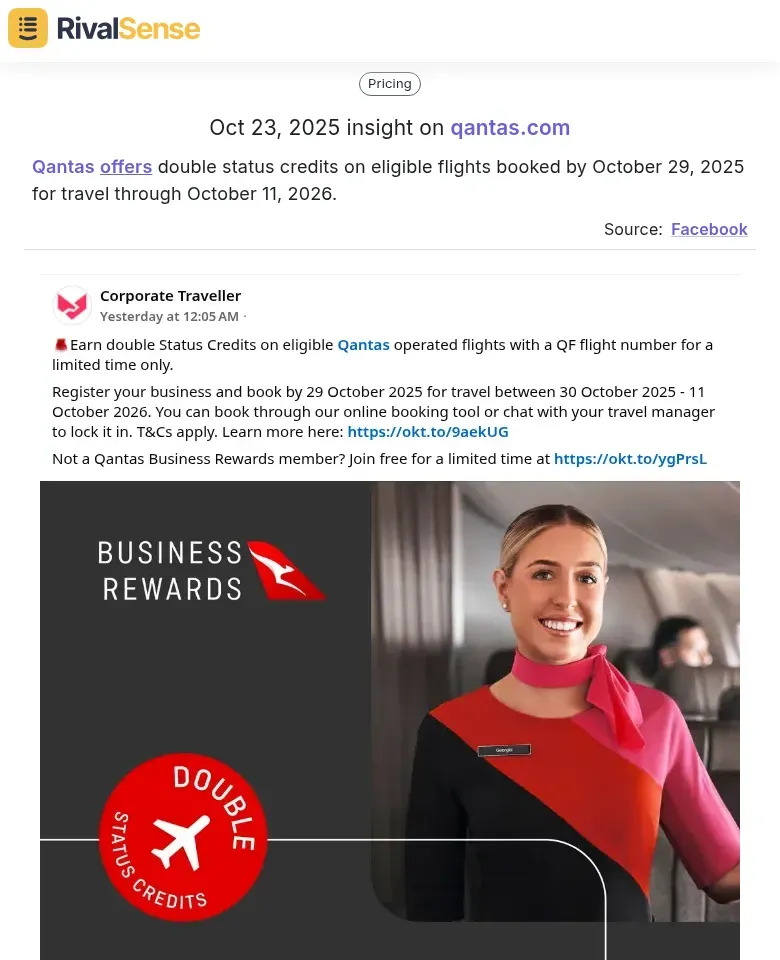Master Competitor Pricing Insights to Boost Account Health
Competitor pricing insights are a critical component of strategic business management, directly influencing your account health—the stability and growth of your customer base. By systematically tracking and analyzing how rivals price their products or services, you can proactively address market shifts and prevent customer churn. For example, if a key competitor lowers prices for a core service, failing to respond could lead to client defections, deteriorating your account health and revenue streams.
Pricing strategies play a vital role in customer retention and business expansion. Overpricing risks alienating cost-sensitive clients, while underpricing may erode profit margins and long-term sustainability. Regular monitoring of competitor pricing enables you to make informed decisions—such as adjusting your prices, bundling services, or enhancing value propositions—to stay competitive. Here are practical steps to get started:
- 📊 Use tools like RivalSense to track competitor price changes weekly
- 🔍 Analyze how pricing aligns with features and customer feedback
- ⚡ Set alerts for sudden shifts to act swiftly and protect account health
This approach helps foster customer loyalty and drive sustainable growth through data-driven strategies.
Identifying Key Competitors and Their Pricing Strategies
Identifying your key competitors is the foundation of effective pricing intelligence, allowing you to understand the competitive landscape and its impact on your account health. Start by categorizing competitors into primary (direct substitutes) and secondary (indirect alternatives) to focus your efforts where it matters most. Utilize resources like SEMrush for keyword overlap and Crunchbase for funding insights to build a comprehensive list.
Once identified, analyze their pricing models—such as tiered, usage-based, or freemium—and map them against their value propositions. Tracking price changes with automated tools ensures you stay updated in real-time. Create a pricing matrix to compare features, costs, and target customer segments for a clear overview. Don't forget to monitor promotional activities through email subscriptions and social media channels. Use this checklist to streamline the process:
- ✅ List your top 5 competitors
- ✅ Document their pricing pages and structures
- ✅ Note any discounts, trials, or limited-time offers
- ✅ Set up alerts for pricing updates using tools like RivalSense
💡 Tip: Focus on long-term pricing trends rather than one-off changes to make strategic decisions that safeguard account health over time.
Analyzing Competitor Pricing Tactics and Market Positioning
Competitor price changes often signal deeper strategic shifts, such as attempts to gain market share or reposition products in response to market conditions. By analyzing these moves regularly, you can anticipate threats and opportunities that affect your account health. For instance, price drops might indicate a push for volume, while increases could reflect a move upmarket or cost adjustments.
Assess how competitors align pricing with product differentiation—do they charge more for unique features or integrations? Mapping their pricing tiers against target segments (e.g., enterprise vs. SMB) helps identify gaps you can exploit. For example, RivalSense recently tracked that OpenAI updated its web search tool pricing to include separate charges for tool calls and search content tokens, with specific rates for reasoning and non-reasoning models. This type of insight is valuable because it reveals how competitors refine pricing models to optimize revenue and cater to evolving customer needs, enabling you to adapt your strategy proactively.

Evaluate how competitors adapt pricing to economic cycles—during downturns, look for discounts or bundles to retain customers. Use this checklist for thorough analysis:
- 📅 Monitor price changes at least monthly
- 🔄 Compare features and benefits across pricing tiers
- 🗣️ Analyze customer reviews for sentiment on pricing
- 🧪 Test competitor free trials to gauge value firsthand
⚡ Tip: Set up alerts for sudden pricing shifts to react quickly, ensuring your pricing remains aligned with customer expectations and market dynamics.
Extracting Actionable Insights from Competitor Pricing Data
Raw competitor pricing data only becomes useful when interpreted strategically to drive decisions that enhance account health. Start by mapping competitor tiers against your own to identify areas where you can justify premium pricing or need to match rivals to stay competitive. For example, if a competitor charges more for similar features, you can highlight your superior support or adjust prices to neutralize their advantage.
Look for pricing gaps in the market—if all competitors target high-end segments but ignore mid-market needs, that's an opportunity for you to capture untapped demand. RivalSense insights, such as B&M Stores CEO Tjeerd Jegen unveiling a turnaround plan to cut prices and draw customers back into stores amid weak sales, demonstrate how strategic price adjustments can address market challenges. This type of insight is valuable because it shows real-world responses to competitive pressures, helping you inform your own crisis management and pricing flexibility to reduce churn.

Use this checklist to extract key insights:
- ⚖️ Compare feature-to-price ratios across competitors
- 🎯 Identify missing tiers or underserved segments
- 💰 Note discount strategies (e.g., annual vs. monthly billing)
- 📈 Decode broader trends, like shifts to usage-based pricing
By tying these insights to account health, you can target vulnerable segments to reduce churn and leverage premium opportunities to boost expansion revenue.
Implementing Competitor Pricing Insights for Account Health Improvement
Implementing competitor pricing insights transforms your approach to account health by enabling data-driven strategies that prevent churn and attract new customers. Begin by analyzing competitor pricing tiers and bundles to identify gaps in your offerings, then adjust your pricing to match or slightly undercut key rivals while maintaining a strong value perception. This proactive stance helps retain existing clients and win over prospects who are comparing options.
For instance, if competitors introduce premium tiers with advanced features, consider enhancing your own tiers or launching similar offerings to stay relevant. Insights like Qantas offering double status credits on eligible flights booked by October 29, 2025, for travel through October 11, 2026, highlight how promotional pricing tactics can boost customer loyalty and sales. This type of insight is valuable because it illustrates the power of timed incentives in driving engagement, allowing you to design similar campaigns that improve retention and account health.

Monitor the impact of your pricing changes through key metrics like customer acquisition cost, churn rate, and lifetime value. Use this practical approach:
- 📋 Conduct quarterly competitor pricing audits
- 🧪 A/B test pricing changes in small customer segments
- 🔔 Utilize tools like RivalSense for real-time competitor updates and alerts
By integrating these steps, you optimize pricing for loyalty and growth, directly strengthening account health.
Best Practices for Ongoing Competitor Pricing Monitoring
Establishing systematic processes for ongoing competitor price tracking is essential to maintain a competitive edge and protect account health in dynamic markets. Start by creating a dedicated pricing intelligence team or assigning responsibilities to ensure consistency in monitoring efforts. Set regular cadences—weekly for fast-moving industries and monthly for more stable sectors—to stay ahead of trends and adjustments.
Leverage technology and automation to streamline data collection and analysis. Implement web scraping tools, API integrations, and AI-powered platforms to track not just list prices but also promotional offers, bundle pricing, and customer segmentation strategies. For example, use automated tools like RivalSense to monitor competitor websites, receive real-time alerts for significant changes, and generate visual dashboards that highlight pricing gaps and market trends.
Integrate competitor pricing insights into your regular business strategy reviews to ensure alignment with overall goals. Include pricing analysis in monthly executive meetings and form a pricing committee to review competitor moves and recommend adjustments. Develop response protocols for various scenarios, such as price wars or seasonal discounts, to enable quick, strategic reactions. Key practices include:
- 🛠️ Use automated tracking for comprehensive coverage
- 📊 Maintain a centralized pricing database
- 🗓️ Schedule regular strategy sessions to discuss insights
- 🚀 Create response plans for common competitor actions
This holistic approach ensures that competitor pricing insights continuously inform your decisions, driving sustained account health and business success.
Take Action with RivalSense
Ready to turn competitor insights into actionable strategies that boost your account health? Try RivalSense for free and get your first competitor report today to start tracking product launches, pricing updates, and more—all delivered in a weekly email. Don't wait; leverage real-time intelligence to stay ahead in your market!
📚 Read more
👉 Mastering Competitor Analysis with Actionable Insights
👉 How to Analyze Competitor Ads: A Practical Guide for B2B Leaders
👉 Data-Driven Key Account Identification in Pharmaceutical Logistics
👉 How Topstep's Plus500 Partnership Revealed Competitive Edge
👉 Competitor Website Change Framework for Key Account Growth
